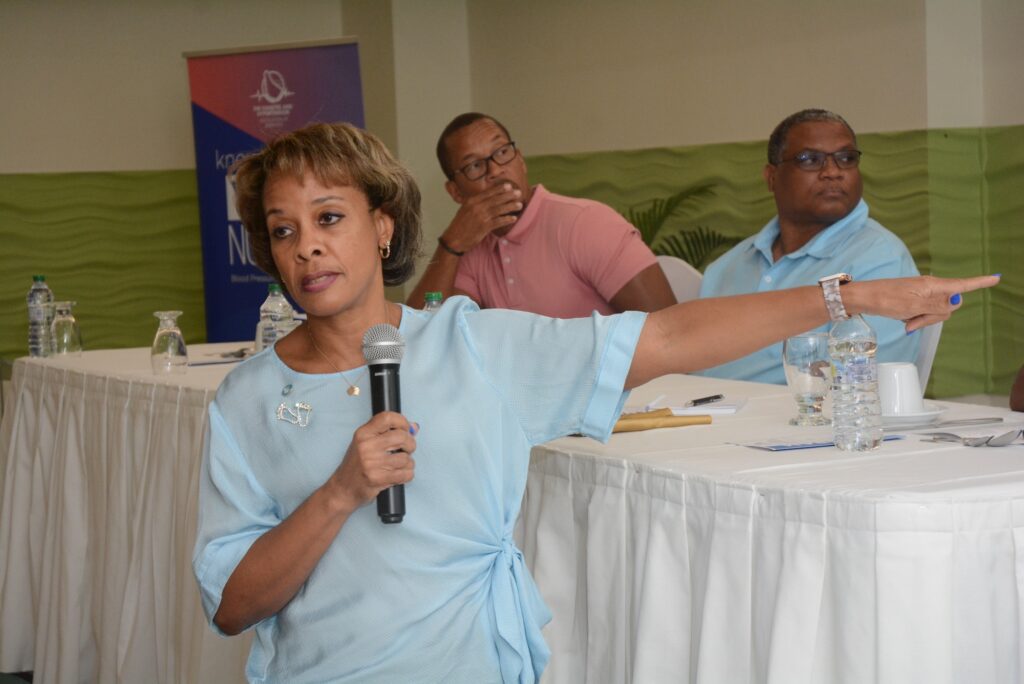The Barbados Water Authority (BWA) has launched an initiative to tackle the island’s long-standing issue of unaccounted-for water by installing 130 district metres to monitor water flow and pinpoint losses.
The project forms part of the BWA’s wider strategy to modernise its infrastructure and reduce water wastage, which has been a persistent challenge.
Head of the BWA’s Water Resources and Environmental Management Unit, Alex Ifill explained on Thursday that the new district metering initiative aims to provide real-time data on water flow into various areas, improving the accuracy of water monitoring and facilitating the faster detection of leaks.
“We are installing 130 metres to ensure we know exactly how much water is being delivered to each district and what our actual losses are,” he said.
This effort builds on previous work by the authority, which has successfully reduced unaccounted-for water from 60 per cent in 1997 to 40 per cent today. In addition to the metering system, the BWA has replaced approximately 23 kilometres of old pipes in its ongoing efforts to overhaul the island’s water infrastructure.
“These are the steps we are taking to reduce unaccounted-for water. It will not happen overnight, but we are consistently working on it,” Ifill noted, highlighting the significant costs involved in laying new pipelines, which amount to around one billion dollars per kilometre.
Addressing concerns from the public about the roadworks that often accompany these upgrades, Ifill reassured residents that these disruptions are a necessary part of improving water services.
“People complain about the road getting dug up when we replace mains, but this is the work we’re doing to service our customers better. Like most things, it takes money and time,” he said. He also emphasised that while the BWA is striving for greater self-sufficiency, government funding remains crucial to achieving its pipe replacement targets.
In addition to its metering and pipe replacement efforts, the BWA has partnered with the Caribbean Community Climate Change Centre (CCCCC) under the Water Sector Resilience Nexus for Sustainability in Barbados (WSRN S-Barbados) project to educate the public on water and energy conservation.
The first in a series of Water-Energy Nexus Conservation Community Meetings, which took place on Thursday at the St John Parish Church, is intended to raise awareness about the link between water conservation and energy efficiency.
“This is the first of several consultations across Barbados where we aim to sensitise the public on water conservation and the critical water-energy nexus,” said WSRN S-Barbados Project Engineer Alex Harewood during the meeting.
Felicia Cox, a renewable energy specialist, also emphasised the role of energy in water production.
“Electricity is crucial for water pumping, chlorination, and distribution. The Barbados Water Authority is the largest user of electricity on the island,” she said.
Cox further explained that the project introduces solar energy to help the BWA reduce electricity costs and improve resilience: “With backup generators, we can ensure the water system remains functional, even during grid failures.”
Meantime, the BWA has sought to assure St John residents that steps are being taken to address persistent concerns over murky water flowing from their taps, especially after heavy rainfall.
Residents have long reported repeated issues with water quality in the parish, and the BWA acknowledged that the source of the problem lies in the unique characteristics of the Bowmanston underground aquifer, which serves the area.
Unlike other wells where water filters through rocks, Ifill said, Bowmanston’s supply combines surface streams with underground sources. This combination allows surface water to flow directly into the system, leading to muddiness, known as turbidity, particularly after periods of heavy rain.
Ifill said the BWA has started mitigation efforts, including lining parts of the cave system to prevent overland water from entering. But he admitted that has not fully solved the problem.
“We’ve done some significant work there that has reduced it a bit, but not enough,” Ifill acknowledged.
The BWA is also planning to introduce a more advanced filtration system, though Ifill stopped short of offering a concrete timeline for its implementation. “I cannot tell you that it will be done tomorrow, but we are making progress,” he said.
To further assist in resolving the issue, the BWA has called on residents to report any caves or sinkholes that could be contributing to the water quality problems.
“If you know any, please call the [Barbados] Water Authority and tell them,” Ifill urged.
The BWA has installed a turbidity monitoring system at the Bowmanston pumping station to improve the prediction and management of rainfall events. This system will enable the authority to shut down the pumping system ahead of potential problems, helping to reduce the risk of muddy water entering the distribution network.
“You might be out of water for a time, but it will not be as prolonged as if you had dirty water through the pipes,” Ifill explained. (SM)
The post BWA to improve water accountability with metering project appeared first on Barbados Today.


